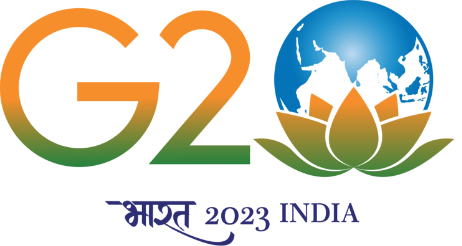SPEECH OF HONURABLE GOVERNOR PUNJAB AND ADMINISTRATOR, UT CHANDIGARH, SHRI BANWARI LAL PUROHIT ON THE OCCASION OF INAUGURAL CEREMONY OF THE DIGITAL POPULATION CLOCK AT POPULATION RESEARCH CENTRE PRC PANJAB UNIVERSITY CHANDIGARH ON JULY 20, 2023
- PRB
- 2023-07-20 12:30
At the outset, I would like to extend many congratulations to Punjab University, Chandigarh for installation of Digital Population Clock in its Population Research Centre.
This digital clock which will show the population projections based on the formula developed by IIPS Mumbai.
I believe, the population clock will be immensely beneficial as it will provide a quick overview of the entire nation’s population.
It will also help in capturing data regarding Total Fertility Rate, Infant Mortality Rate and Maternal Mortality Rate.
I hope that this clock will be able to create awareness in young generations about the pressure of rising population and will also be of importance in research.
Friends,
In India population changes every second and in Chandigarh it changes after 11 minutes.
This computation is based on population growth of the last two census.
In fact, every year, the world population is increasing by 83 million.
The total population of Africa is increasing rapidly, while the population of Europe is shrinking.
Also, Global life expectancy is increasing every year.
In the year 2000, the average life expectancy was 67 years. Now, after about 20 years, it has increased to 72 years.
Ladies and Gentlemen,
Population growth has both pros and cons.
More people require more resources, and as the population increases, the earth’s resources deplete.
The population boom has been affecting the planet and the human race in many adverse ways.
People in developing countries like India, feel the impact more acutely.
An increase in population leads to a vast army of the labour force. But, it is difficult to employ such extensive labour working force due to a shortage of capital resources.
Over population creates more pressure on land. It adversely affects the economic development of the country.
On the one hand, per capita availability of land goes on diminishing and on the other, the problem of subdivision and fragmentation of holdings increases.
Extensive use of natural resources and energy production of oil, natural gas, and coal negatively impacts the planet.
An increase in population also leads to deforestation, which directly affects the environment, and it also degrades the soil’s nutritional value and causes landslides and global warming.
I still remember Prime Minister, Shri Narendra Modi Ji’s, address to the Nation on Independence Day, 2019. He expressed concern over the rapidly rising population of the country and urged both the central and state governments to come up with schemes to deal with the serious issue.
While underlining that population explosion is giving rise to new challenges for the future generations, Modi Ji stated that India will be educated and healthy, if the population is educated and healthy.
Stating that keeping a small family is also a form of patriotism, the Prime Minister had said that India can no longer afford an uneducated society.
He urged the general masses to make sure resources are already created before bringing forth children into the world and that it is necessary to educate people about this solemn duty of parents.
It has since sparked a keen interest and debate on population control policies.
The Government of India is looking into the matter seriously, in order to tackle the problem of population explosion.
There are laws in terms of family planning, efforts are also afoot towards population education campaigns.
Infact, India was one of the first countries in the world to formulate a National Family Planning Program way back in 1952.
In recent years, the decrease in the death rate has been another factor contributing to the rapid growth of the population.
The death rate has seen a decrease due to advancements in the medical field.
Chronic diseases like typhoid, chickenpox, etc., are no longer dreaded.
Even the infant mortality rate has decreased because of proper sanitation facilities, cleanliness, and better prenatal and postnatal care.
In India, most people think that one male child is necessary, and in the expectation of getting a male child, they increase their family size.
Another major cause of the population explosion is poverty. In most families, children become the source of income.
Since, the population clock will help in studying the changing demographics of a region, to initiate and plan Region-Specific efforts requiring population stabilisation, so I believe today we have taken a step in the right direction.
Data, in terms of value, could be called the next ‘oil’ but there will be a need for statisticians to interpret it properly.
I am sure that the Population Research Centre here at Punjab University, Chandigarh will put in their best to come up with statistics that would be required to generate awareness and simultaneously assist in the population stabilisation initiatives of the City.
Friends,
No doubt India has a lion’s share of working age people but we need to empower our youth to fulfil the dream of building Atmanirbhar Bharat.
Universities like Punjab University can provide a conducive environment for giving wings to the ideas of young generation so that we may see more and more start-ups leading to self empowerment.
If we don’t empower our youth, we will risk squandering the considerable advantage of being the world’s most populous country with the world’s largest share of working-age human capital.
Similarly, I believe Equipping our elderly- population with new age skills so they may lead fuller professional lives and keep contributing to nation building, is necessary.
We must remember that if young are the ‘Demographic Dividend’, seniors are ‘Demographic Bonus’ for the nation.
So, let us all contribute towards nation building and simultaneously run vigorous awareness campaigns to educate people about the need of limited size of family.
Ending on the lighter note, I would say that ‘Education is the best contraceptive pill that can be given to the People’.
Thank you,
Jai Hind.



